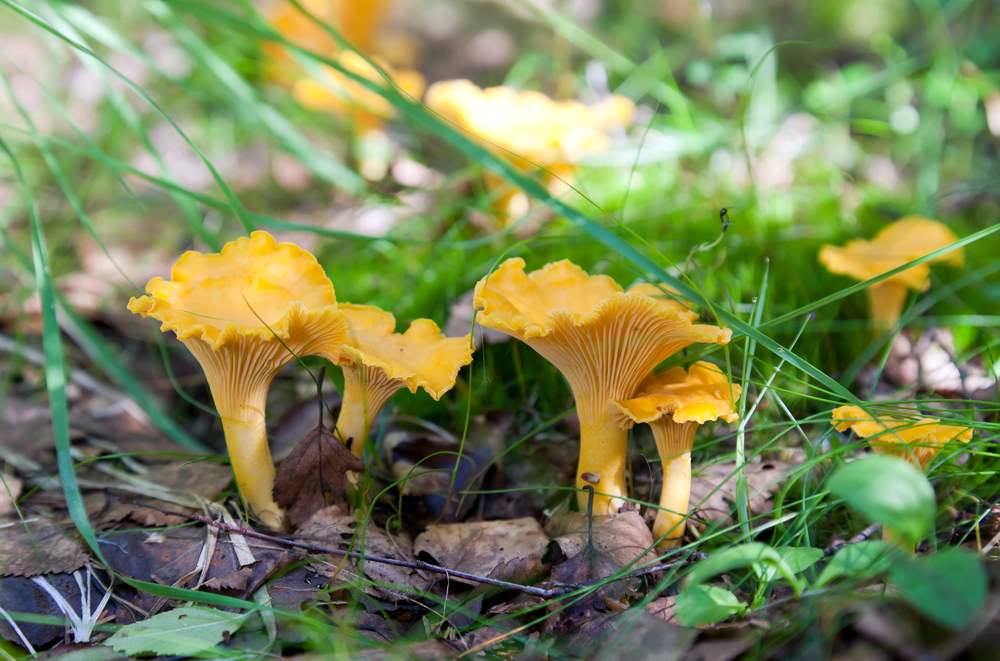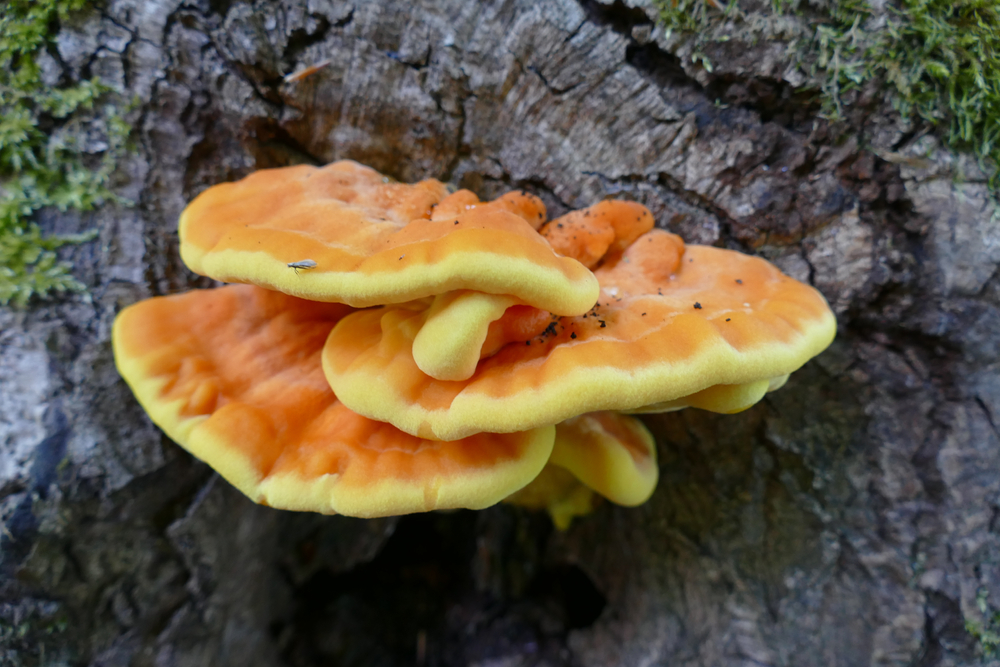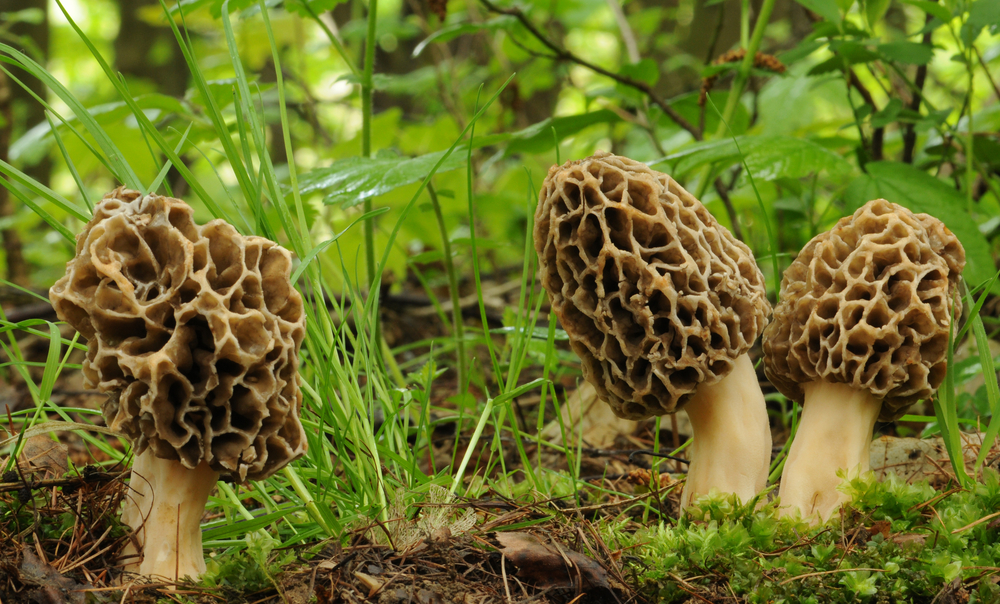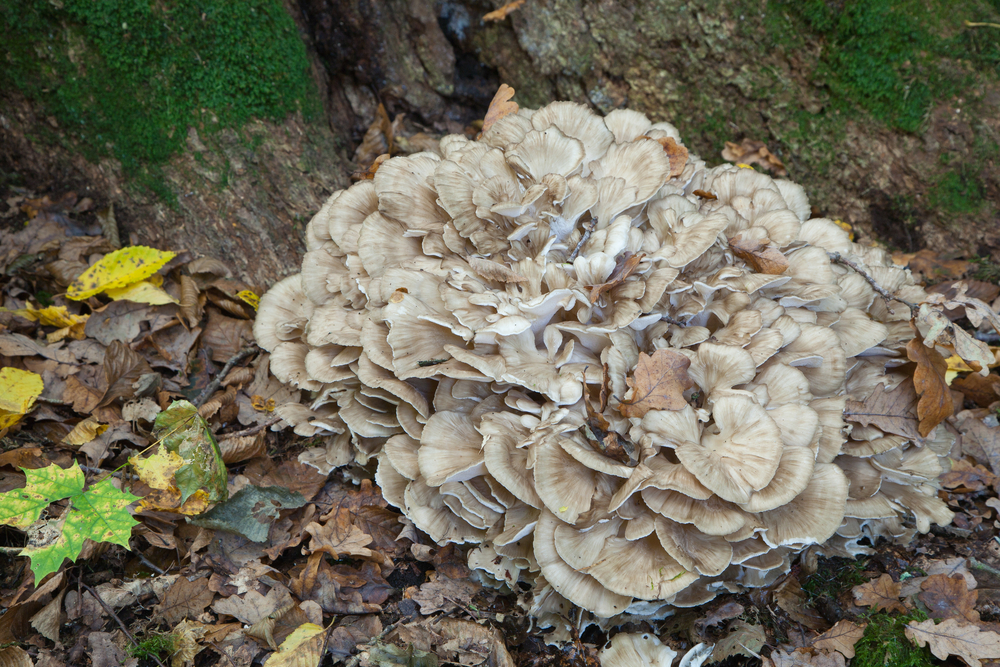[ad_1]
I find myself engaging in conversation in various social circles, I often bring up the topic of foraging and eating wild plants and how this survival skill is being forgotten. Oftentimes, the topic of harvesting and eating wild mushrooms is the one that captures the attention of the room.
Those that never experienced more than the store-bought mushrooms show signs of skepticism, and their attitude toward foraging suddenly changes. I often wondered why this general fear of wild mushrooms, and after doing a little bit of research, I found out why.
It turns out that in the United States, there are more than 7.000 annual cases recorded of exposure to toxic mushrooms. This means that people get in contact with various types of mushrooms, intentionally or unintentionally, and due to the toxic nature of these mushrooms, they make the statistics. Luckily, the number of cases that result in major harm or prove to be fatal is quite low, less than 40 people per year.
If you are the type of person willing to give mushroom foraging a try, you will be rewarded with a tasty, nutritional reward. In fact, mushrooms have much more protein than most vegetables, and they hold high levels of vitamins. Also, few people know that mushrooms are the only non-animal food with a vitamin D content.
Besides being a good food source, mushrooms may also have some medicinal properties, and their anticancer, antiallergenic, antioxidant, antiviral, and antibacterial properties are being tested by various scientific communities all over the world.
A Myriad of Mushrooms
According to the International Journal of Microbiology, there are between 5,000 and 10,000 species of mushrooms in North America alone, so foraging for edible mushrooms can become quite challenging for the novice forager. To put things in perspective, you should know that of these 10,000 species native to North America, about 100 are considered edible and safe for human consumption.
I often like to joke with friends that all mushrooms are edible once, but you should never test this theory, no matter how hungry you are, if you get stranded in the wilderness. There are other less risky alternatives when it comes to wild edibles, and you shouldn’t consume mushrooms unless you are certain you’ve identified an edible variety.
If you want to become a mushroom hunter, I recommend learning just one or two edible mushroom species each year. After you can identify the two varieties beyond a shadow of a doubt, you can expand your knowledge to other fungi.
For your foraging trip, you should bring along a sharp knife, a few mesh bags to store and transport the mushrooms, a good camera, and one or two field guides. The mesh bags will allow for the mushroom spores to be dispersed as you walk, so make sure you’re using only those types of bags for carrying the harvest. Regarding the field guides, these are useful not only to help you identify the mushrooms but also associated trees.
The camera (which can be the one from your phone) will help you take pictures and post them on certain apps like iNaturalist or on social media, where multiple people and various experts can offer input on the mushrooms you’ve discovered. There are also various Facebook groups dedicated to foragers, and just posting a picture on such groups of a mushroom you’re not certain about will provide you with useful information from other, more experienced foragers.
When taking photos of the mushrooms, make sure you take pictures from above but also from the underneath part of the mushroom’s cap, as well as the stalk. Some species can be distinguished by the presence of pores, gills, or other spore structures.
Another trick you can use to identify mushrooms is to make a spore print and post it online. Take the mushroom cap and put it on a sheet of paper with the spore side down (belly), pour a few drops of water on the cap, and then cover it with a glass for a few hours. You will notice that a spore print of various colors and arrangements will appear on the paper after you remove the mushroom cap.
Another piece of advice I can give you is to join a local mushroom club since no matter how many guides you read or bring along, it fails in comparison to finding and seeing the mushroom in their natural environment along someone who knows how to hunt for mushrooms.
These clubs will often organize and conduct forays where people will learn how to find and identify various types of mushrooms in person. Chances are you will be standing shoulder-to-shoulder with an expert, so make sure you ask questions and bring him/her the mushrooms you find to learn more about them.
Eating Them Raw or Cooked?
While you may enjoy eating raw mushrooms in salads and other dishes at home, in the wilderness, cooking any mushroom you find is good practice for a couple of reasons.
First of all, cooking the mushrooms will make them easier to digest, and you won’t have to deal with an upset stomach. The cell walls of mushrooms contain a fibrous substance called chitin. And second, cooking the mushrooms not only breaks down this substance but also helps release the nutrients inside the cell walls.
Regarding how to prepare the mushrooms for cooking, more precisely the cleaning of the fungi, foragers are divided regarding this topic. As a forager with quite a few years of experience, I can tell you that washing the mushroom will alter the taste due to the mushroom’s ability to soak up water like a sponge. I mainly brush off the visible dirt with a soft brush, and that’s pretty much all it takes to clean my harvest.
If that’s not good enough for you, the alternative would be to give the mushrooms a quick rinse. I’ve done this as well, and there’s no shame to it. However, you should refrain from soaking the mushrooms if you want to appreciate their real taste.
Is it Legal to Hunt Mushrooms?
The legality of mushroom hunting is often debated, and some argue that it won’t matter if it’s legal or not when the proverbial brown stuff hits the fan. Well, that might be true, but until then, we still need to obey local laws and make sure we have the permits that may be required in certain states.
In general, there is a limited quantity of mushrooms you can forage for personal use from U.S Forest Service lands. You are allowed to harvest 1 one gallon per day or 5 gallons per season. If you exceed this quantity or if you plan to harvest mushrooms to make an extra buck, you will be required to get a permit.
The rules of mushroom foraging often vary if the species is listed as endangered or threatened, but also if you forage in areas classified as special/protected biological areas. Rules may vary from National Park Service properties to state forests or state parks.
Foraging on public lands may be less restrictive in certain states, but it’s still smart to check with the management of such lands in order to avoid any legal problems.
Some Mushrooms You Should Try
Chanterelles

The Cantharellus genus contains multiple species of mushrooms distributed throughout North America. These mushrooms grow from the ground and are not attached to logs or trees. You will be able to find them in both coniferous and hardwood forests in the summer and fall.
Most folks will harvest the golden chanterelle (Cantharellus cibarius) since it’s one of the most easily recognized species in the Cantharellus genus. Golden chanterelle has a yellow to yellow-orange color and some sort of a fruity aroma. For the connoisseurs, black chanterelle (Craterellus cornucopioides) is a preferred choice in the genus since its flavor has black truffle notes, especially if you dry it.
Chicken of the Woods

Many experts consider the chicken of the woods (Laetiporus sulphureus) to be the perfect choice for beginners since it stands out due to its orange and yellow color. The mushroom can be found on logs or standing trees in the summer and fall. To make sure you’ve got the right fungi, check its underside, where it should have pores rather than gills. Also, harvest the mushroom only from hardwoods since certain species in the Laetiporus genus grow on conifers and are mildly toxic.
The texture of the mushroom allows it to be used as a substitute for chicken, hence the name, and it’s often coated in batter and fried, or perhaps added to soup or pasta. The flavor tastes a bit like chicken, but as a carnivore, I can honestly say it could never replace chicken in my diet.
Morels

Many foragers will hunt for the elusive morels (Morcella genus) since these are considered to be a delicacy, and strangely enough, a lot of beginners also start with these fungi. The mushrooms in the Morcella genus are called true morels, and some species are native to North America.
Foragers often distinguish them based on their color, black, yellow, white, or gray. Or based on the trees they’re typically found beneath. Trees such as Elms, Tulip poplars, Apples, Sycamores, and Ash are the trees to look for when hunting for morels.
True morels have a subtle texture and taste, which can be described as earthy, nutty, and somewhat woodsy. I know some foragers in my circle of friends that swear the darker varieties have mild smokiness notes, but I personally never found any with such flavor.
If you hunt for morels, make sure you do not mistake the true morels with false morels, which are toxic look-alikes. False morels have some distinct characteristics, so make sure you learn about these before harvesting true morels.
Hen of the Woods

When beginners often hear about Hen of the woods, also known as maitake, they assume these mushrooms are related to the Laetiporus species, but they aren’t even in the same family of mushrooms. Hen of the woods is a large mushroom with lobes that fan out from a central core.
Look for the Hen of the woods in late summer and fall on oak trees since it’s often attached to living oaks. One similarity between the Hen of the woods and chicken of the woods is that both mushrooms have pores underneath and not gills. The upper potions of the mushrooms are wavy and brown, resembling the tailfeathers of hens, hence the name.
The mushrooms deliver a savory, earthy flavor with a mild peppery finish, and my preferred method of cooking when it comes to Hen of the woods is to sauté or roast them.
A Final Word
The information provided in this article is meant to be an overview and should not be viewed as a complete guide on identifying and eating mushrooms. I always advise people to seek the guidance of more experienced foragers before harvesting and consuming wild plants.
Foraging for wild mushrooms is a rewarding experience, and every journey in nature from spring to fall can reward you with a good harvest if you pay attention and follow the rules. For those new to the foraging game, there’s a lot of work to be done, and following the suggestions written above is just the beginning.
[ad_2]
Source link
Get more stuff like this
in your inbox
Don't Be Left Unprepared
Thank you for subscribing.
Something went wrong.





![How to Build an Apple Tree Guild [Examples, Companion Flowers, and More!] How to Build an Apple Tree Guild [Examples, Companion Flowers, and More!]](https://i0.wp.com/theworldofsurvival.com/wp-content/uploads/2022/05/How-to-Build-an-Apple-Tree-Guild-Examples-Companion-Flowers.jpg?resize=370%2C297&ssl=1 370w, https://i0.wp.com/theworldofsurvival.com/wp-content/uploads/2022/05/How-to-Build-an-Apple-Tree-Guild-Examples-Companion-Flowers.jpg?zoom=2&resize=370%2C297&ssl=1 740w)